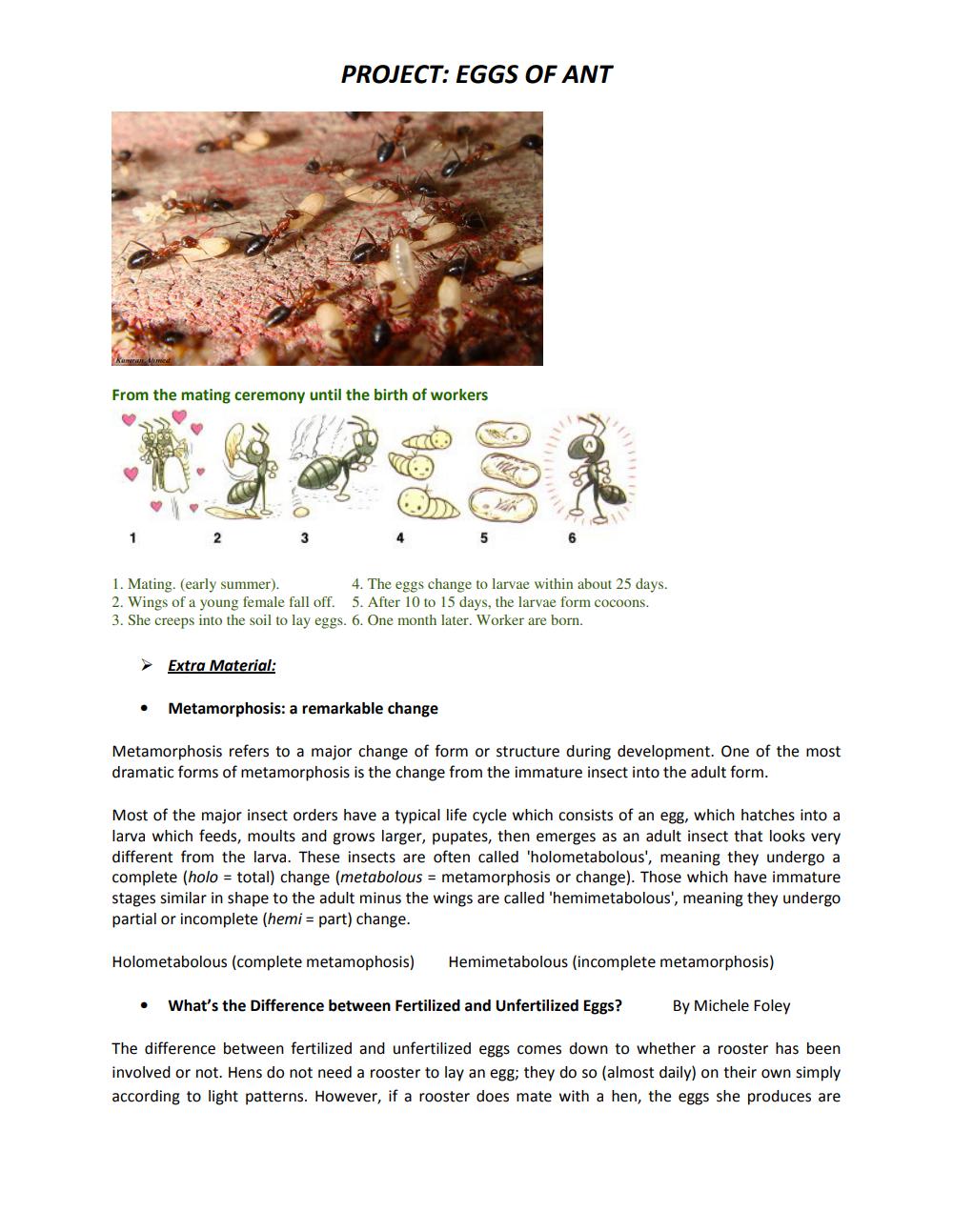________________
PROJECT: EGGS OF ANT
From the mating ceremony until the birth of workers
2
199.
000.
5
6
1. Mating. (early summer).
2. Wings of a young female fall off.
3. She creeps into the soil to lay eggs. 6. One month later. Worker are born.
➤ Extra Material:
4. The eggs change to larvae within about 25 days. 5. After 10 to 15 days, the larvae form cocoons.
Metamorphosis: a remarkable change
Metamorphosis refers to a major change of form or structure during development. One of the most dramatic forms of metamorphosis is the change from the immature insect into the adult form.
Most of the major insect orders have a typical life cycle which consists of an egg, which hatches into a larva which feeds, moults and grows larger, pupates, then emerges as an adult insect that looks very different from the larva. These insects are often called 'holometabolous', meaning they undergo a complete (holo = total) change (metabolous = metamorphosis or change). Those which have immature stages similar in shape to the adult minus the wings are called 'hemimetabolous', meaning they undergo partial or incomplete (hemi = part) change.
Holometabolous (complete metamophosis)
Hemimetabolous (incomplete metamorphosis)
• What's the Difference between Fertilized and unfertilized Eggs?
By Michele Foley
The difference between fertilized and unfertilized eggs comes down to whether a rooster has been involved or not. Hens do not need a rooster to lay an egg; they do so (almost daily) on their own simply according to light patterns. However, if a rooster does mate with a hen, the eggs she produces are




